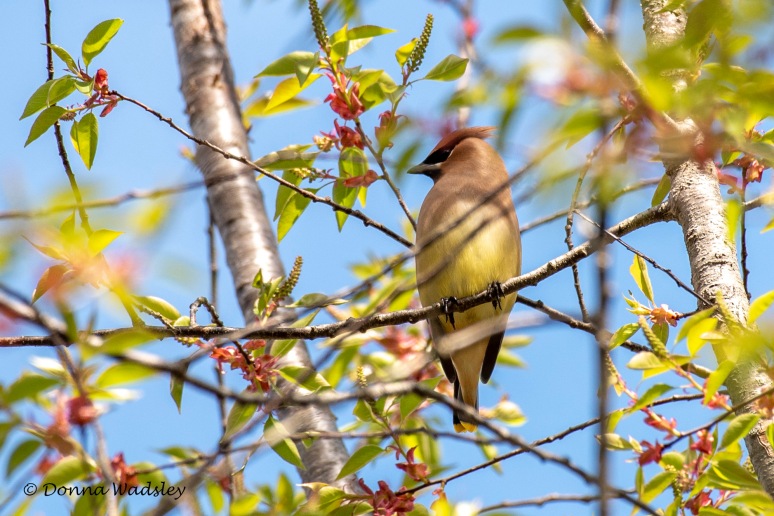Poplar Island Birding
Poplar Island is a successful clean-dredge spoil restoration project in the Chesapeake Bay for migratory birds traveling the mid-Atlantic fly-way that began in 2001.
In 1847, the human-inhabited island was 1,140 acres with a village and forests.
In 1996, the island had eroded to less than five acres.
Today, Poplar Island’s restoration footprint is complete at 1,715 acres. It’s interior is now being finished to include several types of habitat for nesting.
.
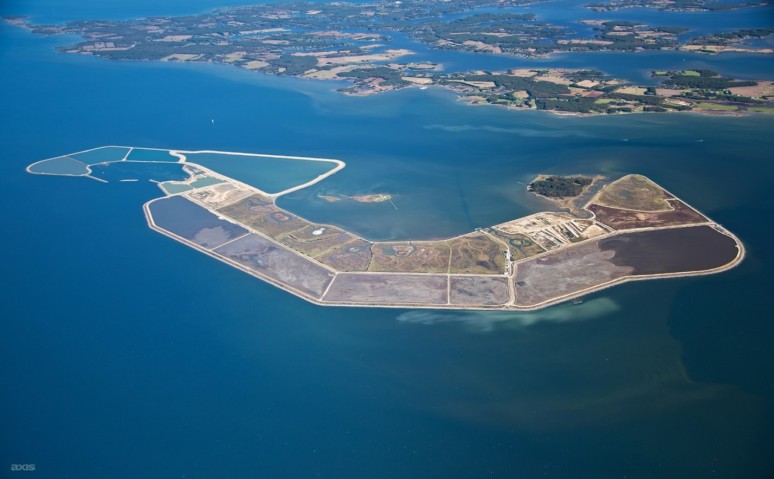
Poplar Island, aerial June 2022
(courtesy http://www.poplarislandrestoration.com)
To date, highlights include 262 identified species of birds, with 38 nesting species, such as the Bald Eagle, Osprey, Short-eared Owl, American Oystercatcher, Glossy Ibis, Snowy Egret, Least Tern, and Common Tern. Winter bird censuses have reported over 36,000 birds in one day.
Through lottery reservations, the island was opened with limited birding trips to the public. My first visit to Poplar Island was in 2019, and I’ve returned several times since including last fall, and recently two times just a few weeks ago.
We ride the Terrapin over to the island, then jump on a tour bus and ride around to points where we can safely disembark away from construction, stopping along the way for anything we can watch from inside the bus.
Yes, I lucked out on going twice a week apart a few weeks ago! One visit, the weather tried to turn foul with winds and rain (43 species seen), and the other with some sun (48 species seen).
Here is a sampling of my collection from those the two days.
.
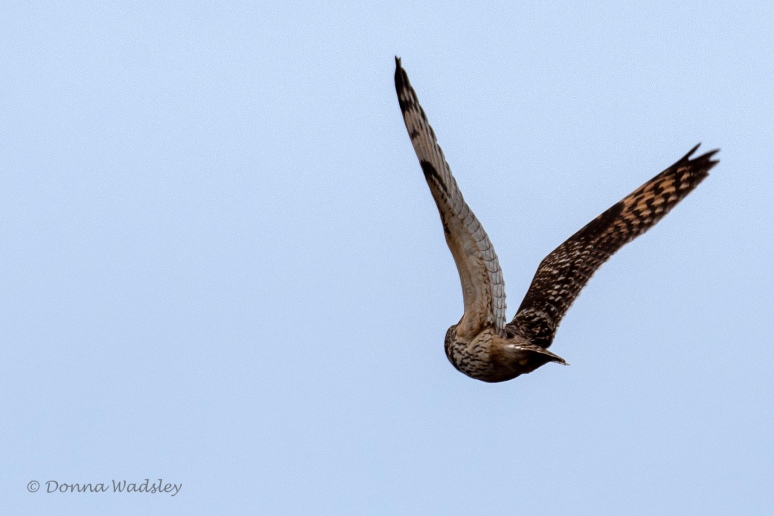
Short-eared Owl (Lifer #309)
(These owls migrate to Canada in the spring; last summer, a pair stayed
and nested on the island, fingers crossed they continue to stay)
.
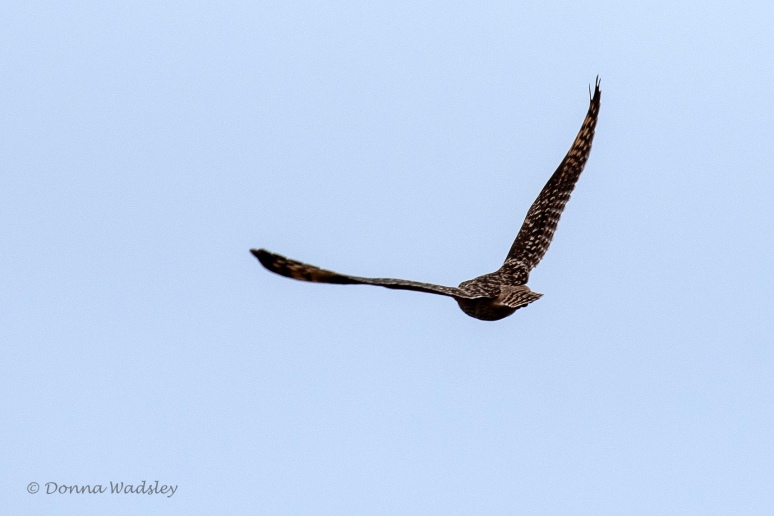
Short-eared Owl
(I was disappointed I didn’t get it’s face but I’ll take the shots!)
.
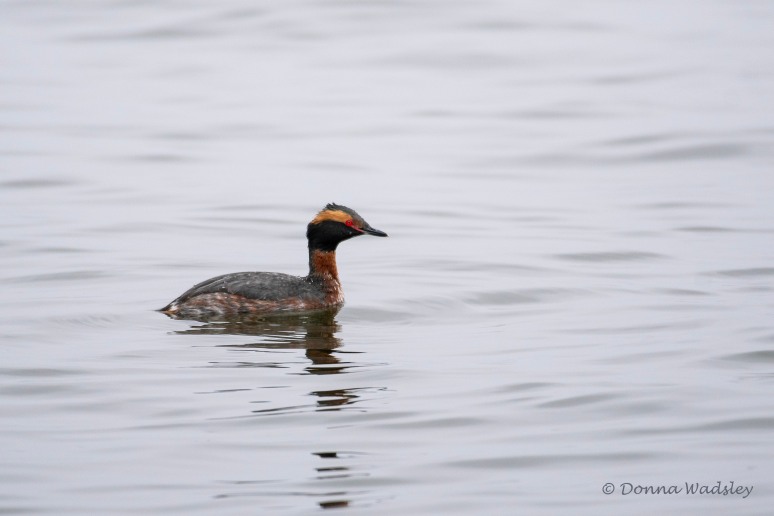
Horned Grebe
.
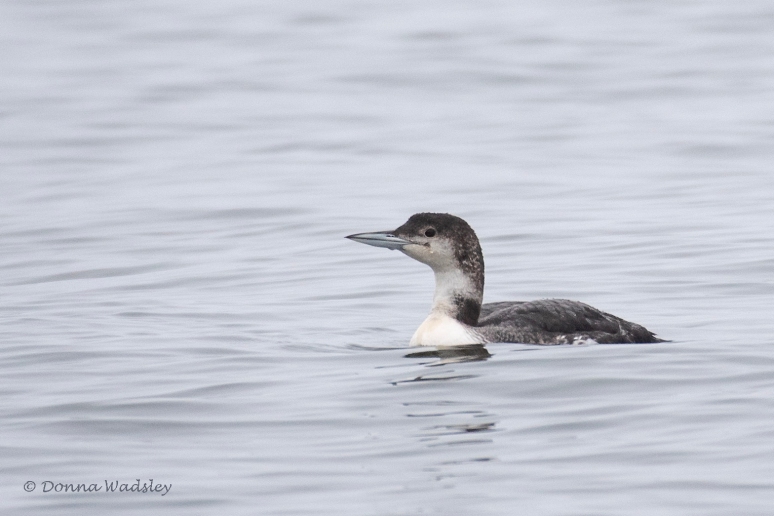
Common Loon
.
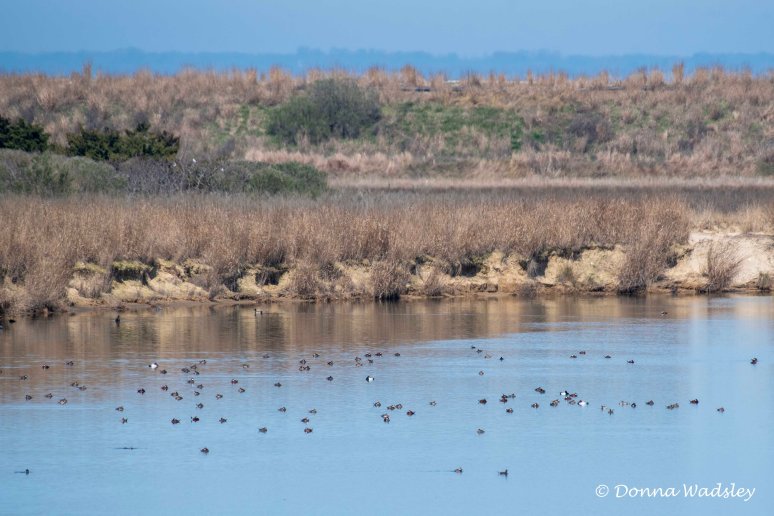
Ruddy Ducks, Canvasback, Lesser Scaup
.
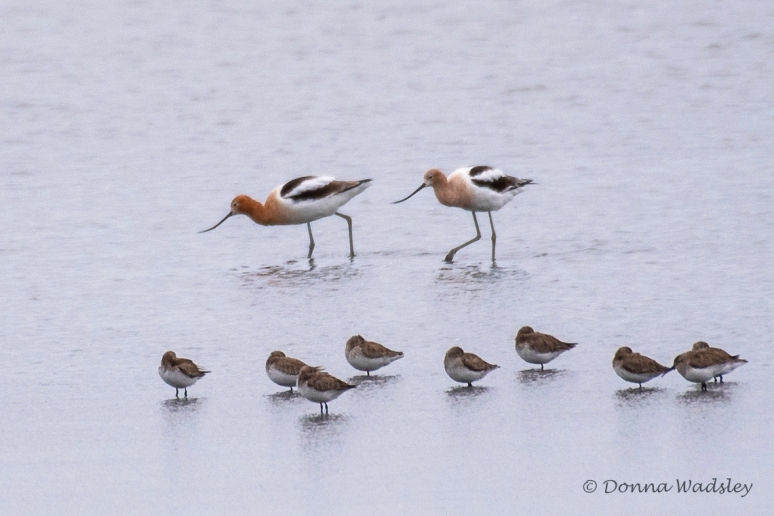
American Avocets (top), Dunlins (bottom)
.
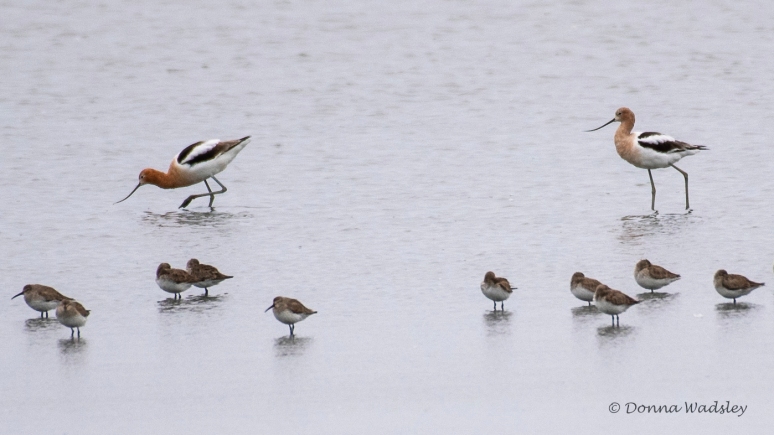
American Avocets (top), Dunlins (bottom)
.

Least Sandpipers
.

Snowy Egret
.
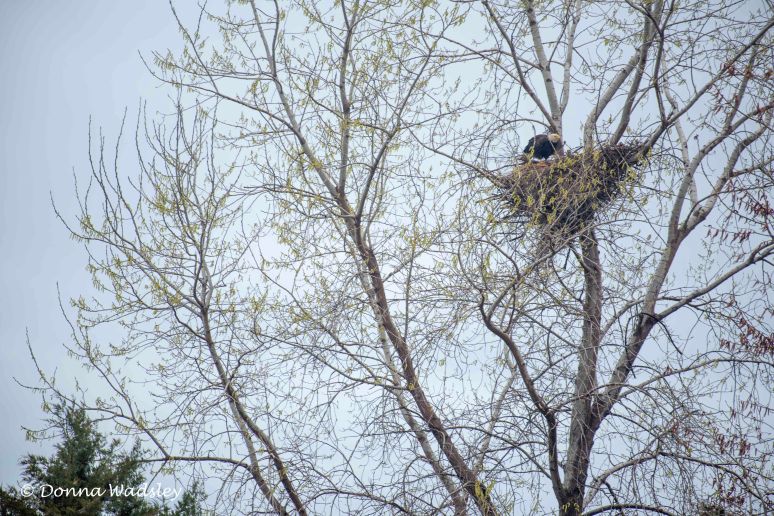
Bald Eagle nest
(photographed through bus window)
.

Above photo cropped….yes, an Eaglet!
There are actually two Eaglets in the nest.
.
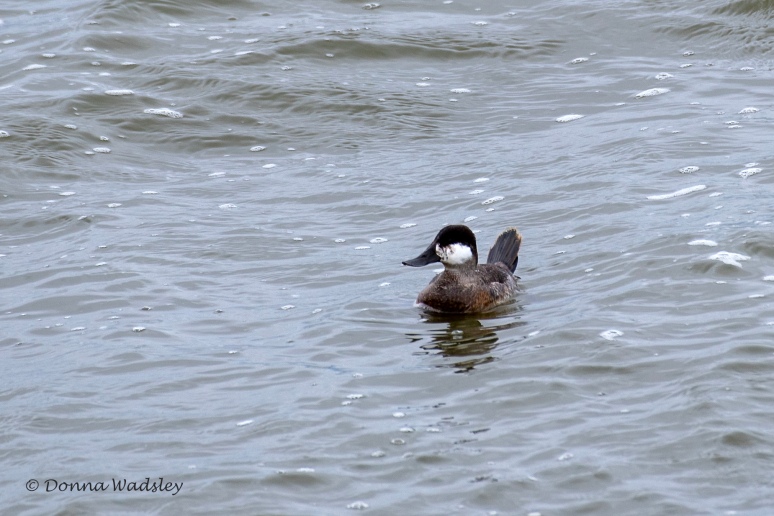
Ruddy Duck (male)
.
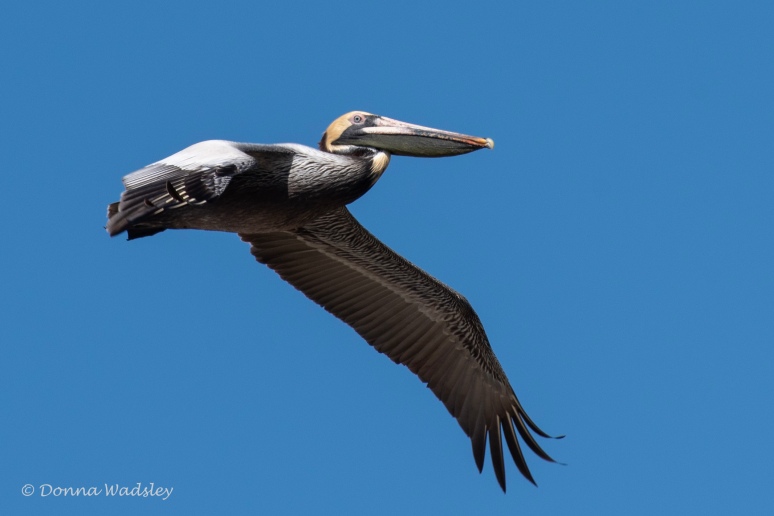
Brown Pelican
(exciting sighting and for it to fly right by us!)
.
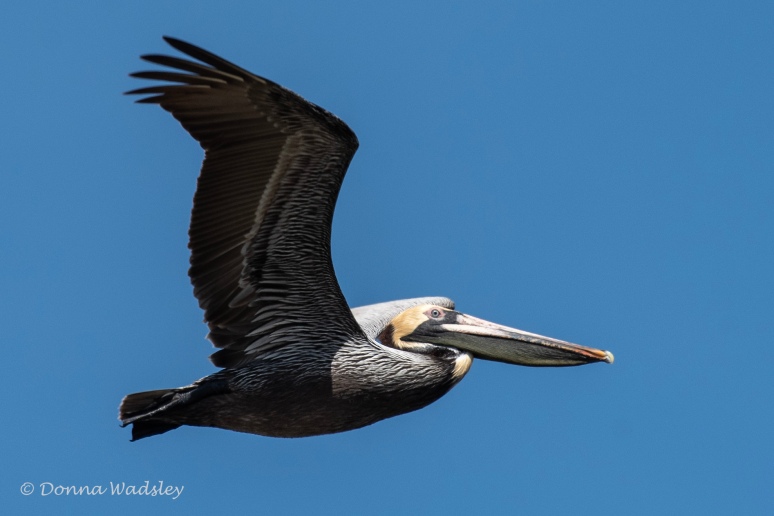
Brown Pelican
.
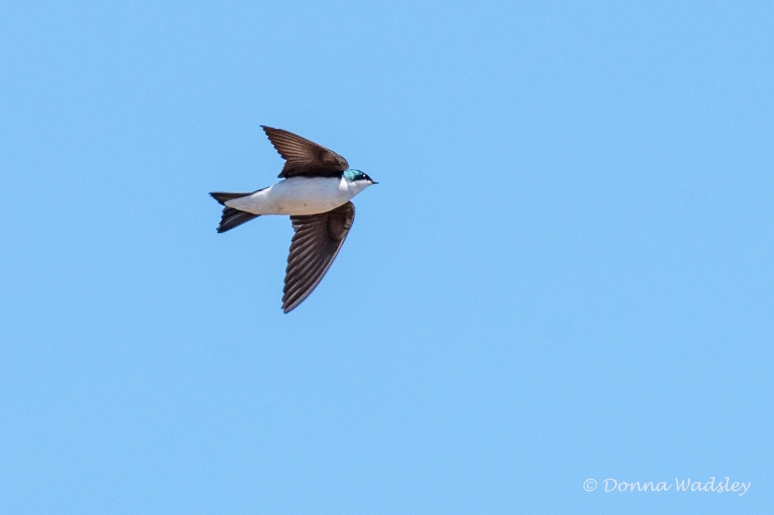
Tree Swallow
.
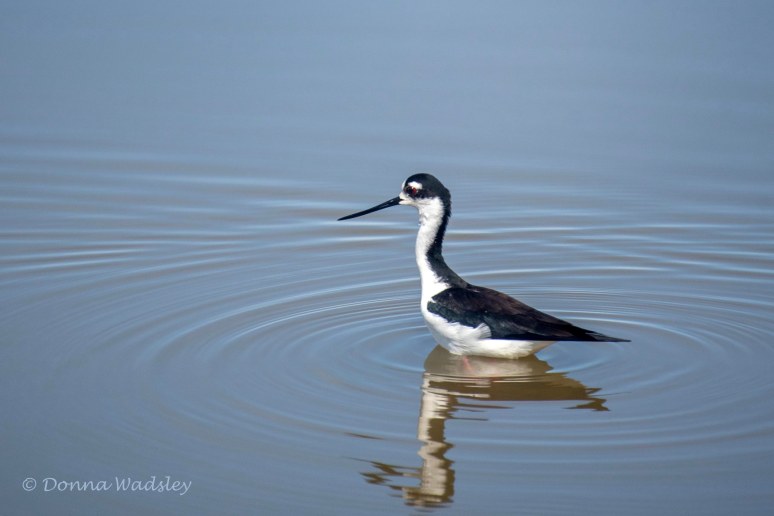
Black-necked Stilt
.

American Avocet
.
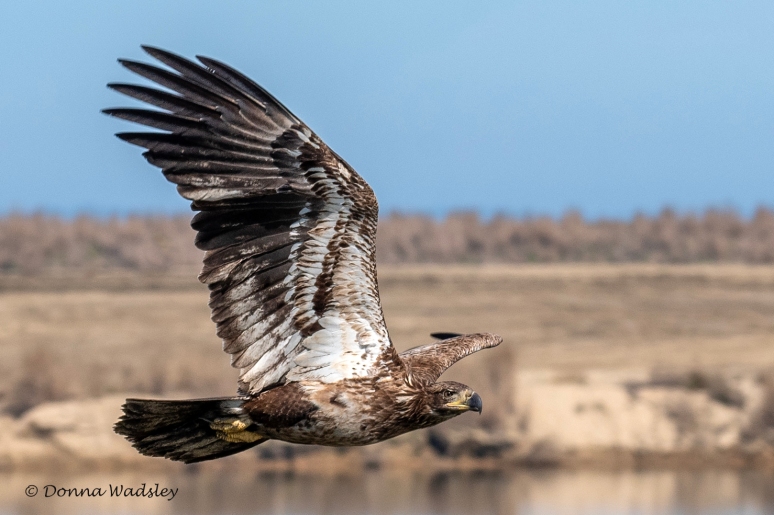
Bald Eagle (immature) Fly-By
.

.

.
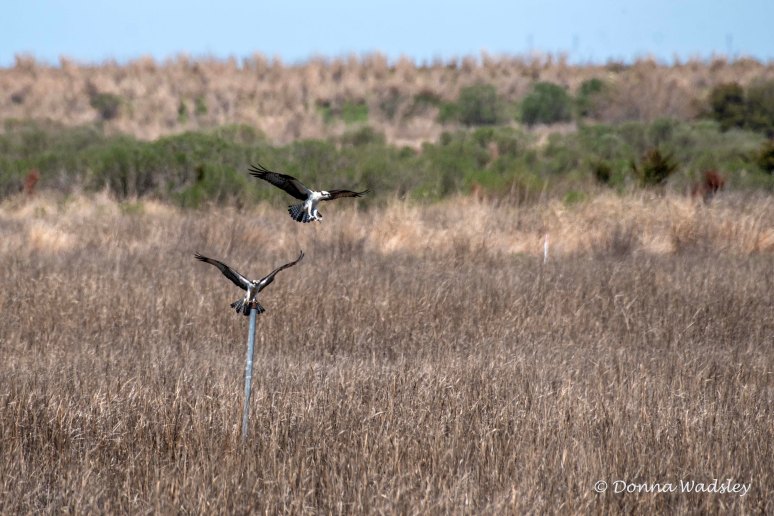
Osprey
.
If you live within a few hours of Tilghman Island where the boat departs for Poplar Island, see more information on the bird tours here.
.
Swan, Heron and Goslings
.
A week ago, I planned an early morning quick stop to check a small cove where I have been lucky with birding.
Lo and behold, I found a beautiful Tundra Swan foraging! For the most part, these winter swans departed the Chesapeake Bay in March to head back to the Arctic.
.
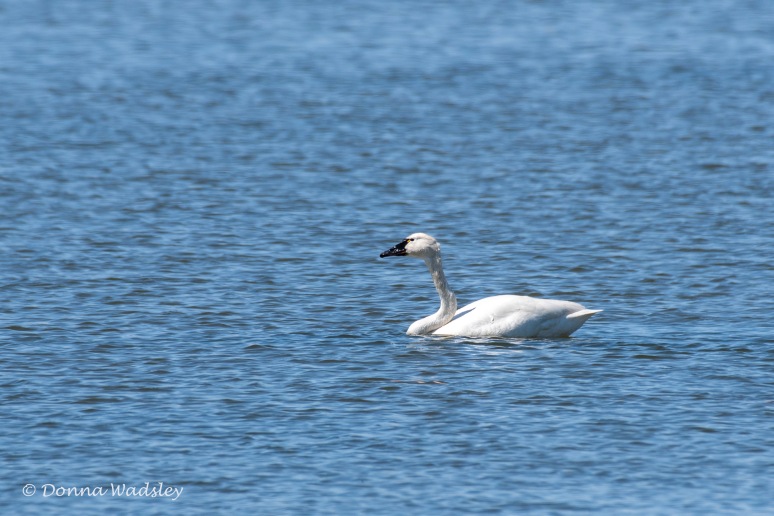
Tundra Swan on April 8th
.

Bottoms up!
.

.
I noted no wing injury and it looked quite healthy. Fingers crossed it’s moved on and connected with maybe a flock of migrating Canada Geese and heading north for its Arctic home. Safety in numbers!
And what do we have here? As I was photographing the swan, alongside me a family of Canada Geese was foraging the grass.
.

Canada Geese
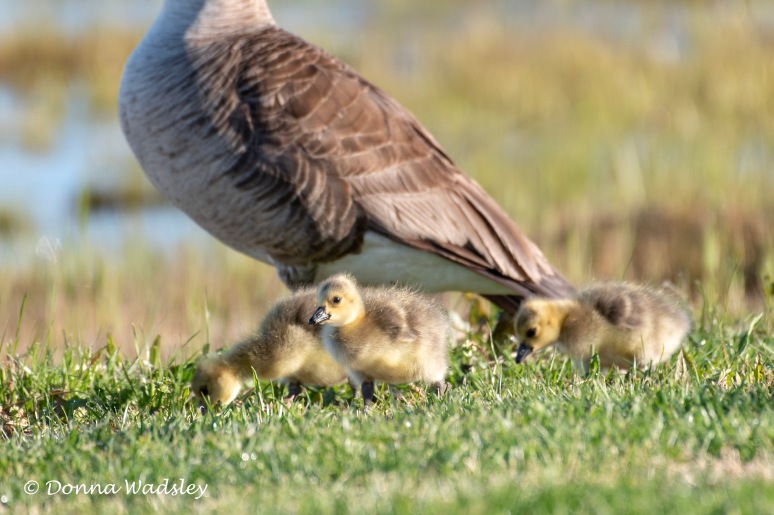
.
What again? Alongside me in the other direction was a heron fishing, and trying to get away from my lens.
.
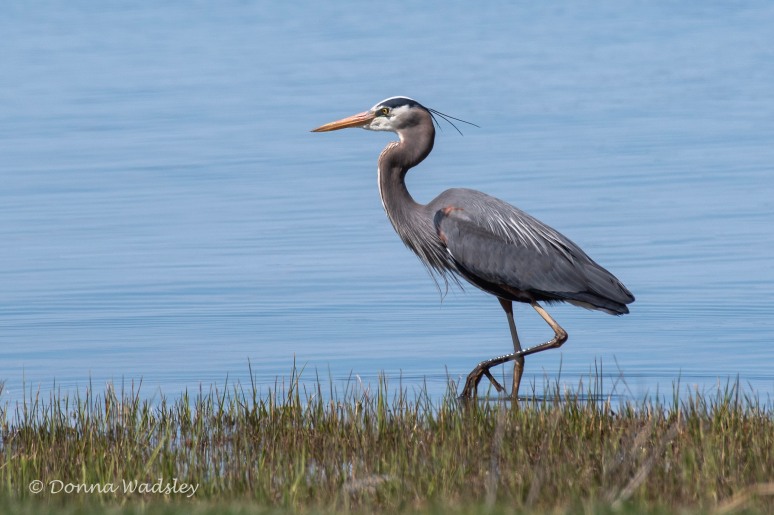
Great Blue Heron
.
So exciting but I was on a timed visit; I had to go!
It was just the beginning of my day’s thrill after thrill. I was enroute to catch a boat for a birding tour on Poplar Island in the Chesapeake Bay. That post (may take two!) is forthcoming…. 🙂
.
1-2-3 Cute As Can Be – #32
.
My recent little-bird favorites, doing that cute thing!
From the year-rounds….
.

Carolina Wren
.
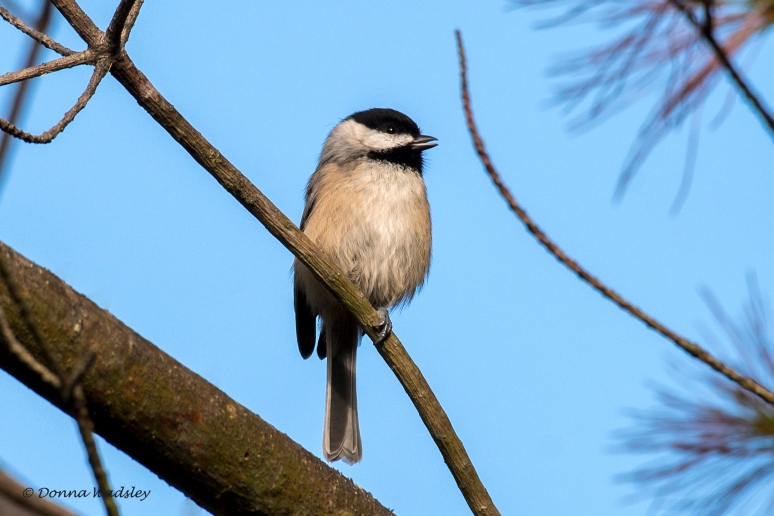
Carolina Chickadee
.
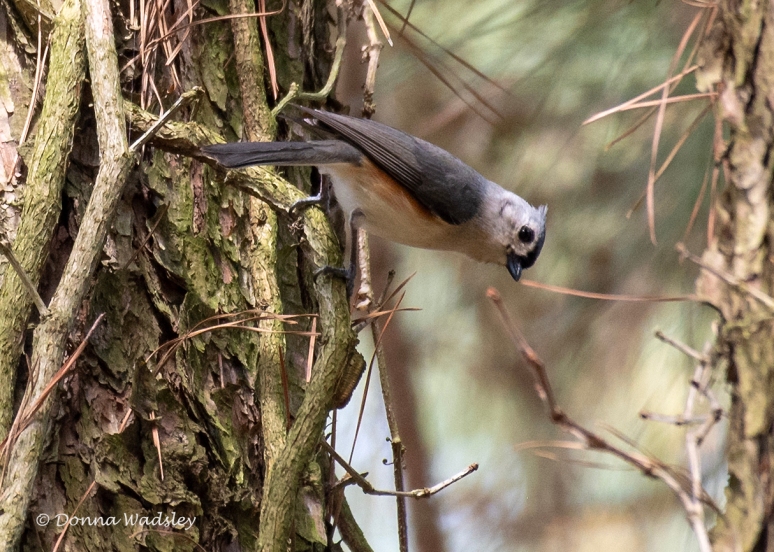
Tufted Titmouse
.
to the early Spring returners…..
.

Pine Warbler
.

White-breasted Nuthatch
.
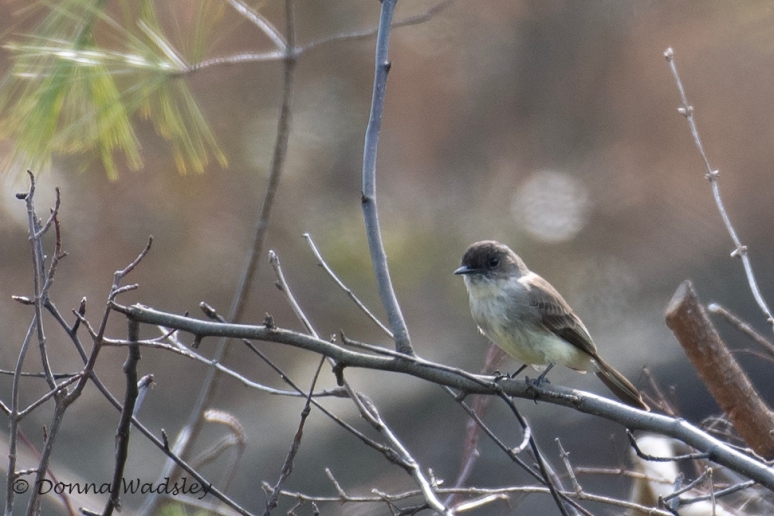
Eastern Phoebe
.
to the soon-to-depart.
.
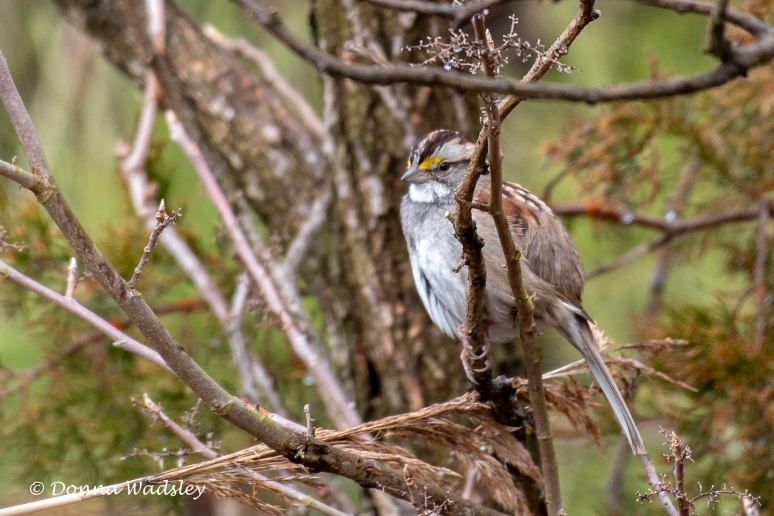
White-throated Sparrow
.
We get flocks of White-throated Sparrows all winter, and they are one of the last of the winter sparrows to leave us. With the trees budding a bit early this year, it was nice to get some pretty captures of one with the buds before *poof* they’re gone too!
.
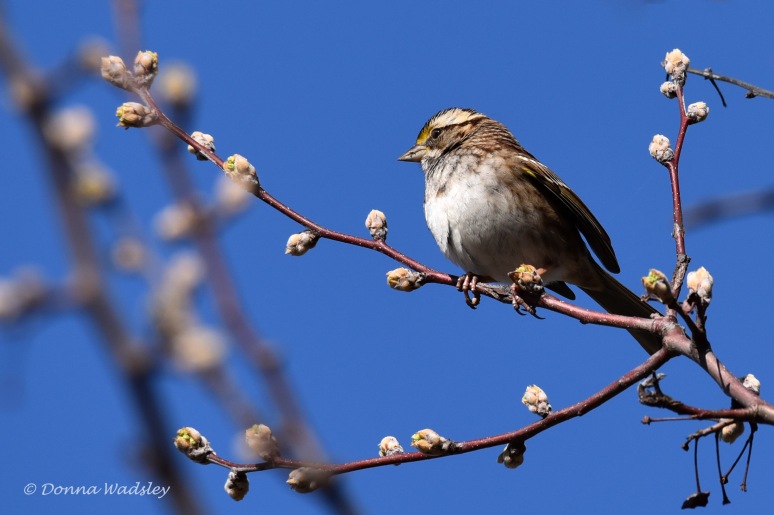
White-throated Sparrow
.
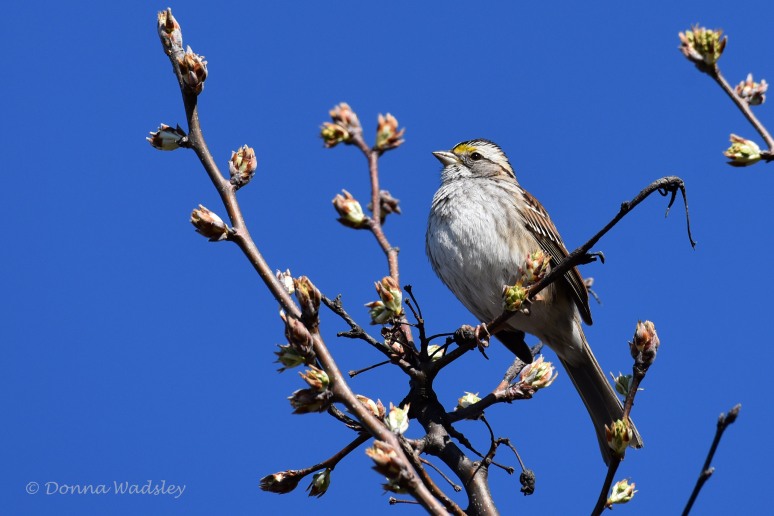
.
.
Turkey Surprise
.
Never did I expect this sighting in our backyard.
Yesterday, my husband hollered, “TURKEY”!
I came a-running through the house 😂 grabbing my camera along the way. From our kitchen bay window, we watched a tom meandering through the bordering tree line and marsh behind us. I sneaked outside onto our back porch, and waited to see if it would come out for some photos.
He did, and proudly too!
.
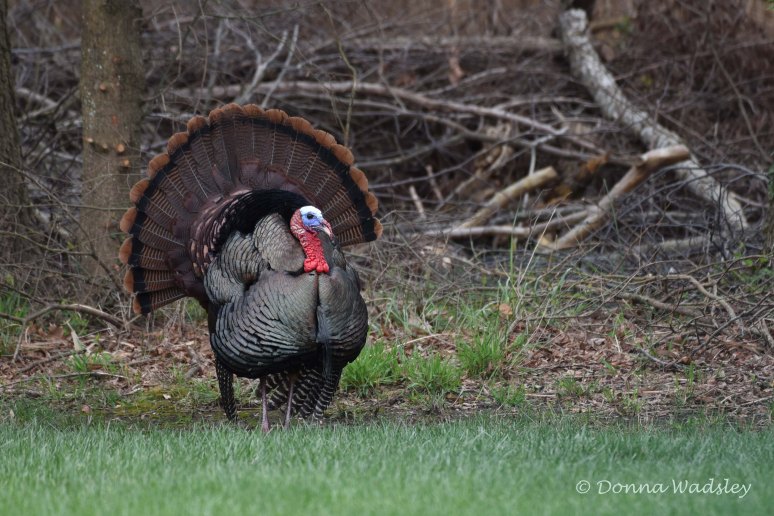
Wild Turkey (tom/male)
.
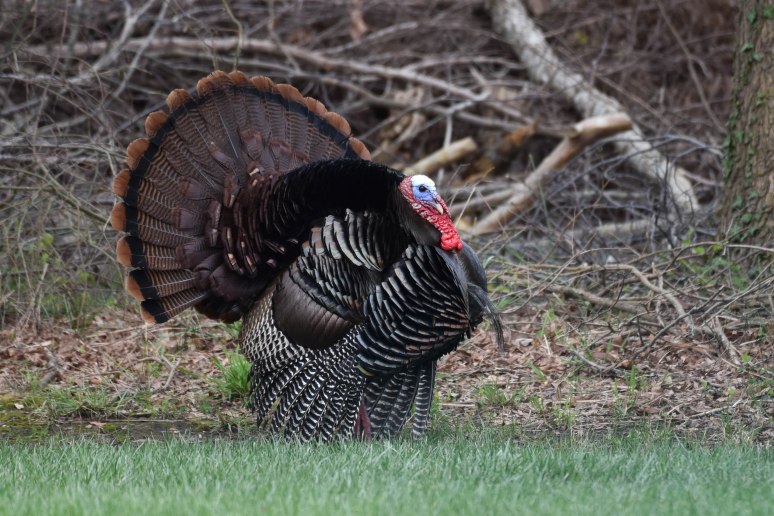
.
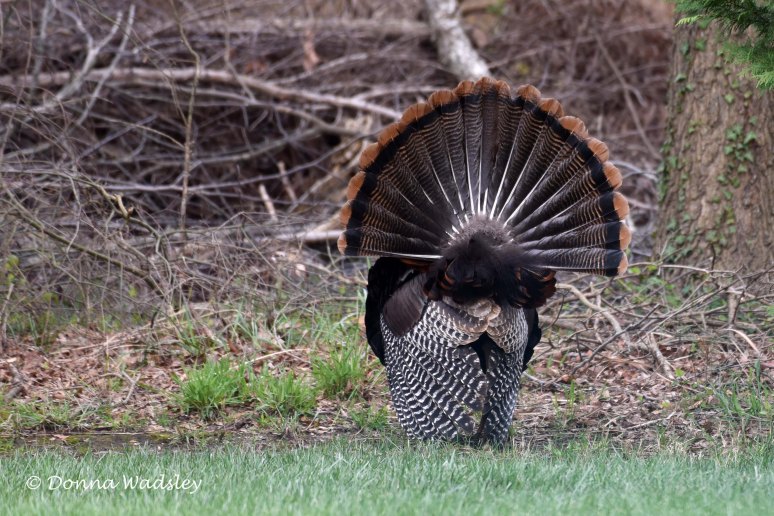
.
After that strutting display, the tom began walking to the left and disappeared behind my flowerbed. I spotted a hen hidden in the thicket and moved slowly out of my hiding spot to try to see where the tom went. He had turned back, caught sight of me darn it, and took off running to our trees on the side of the house. To my surprise, he was followed by four fast-running hens!
Fact: If a Wild Turkey is spooked, it can reach a running speed of 20-25 mph (32-40 km/h)!
.
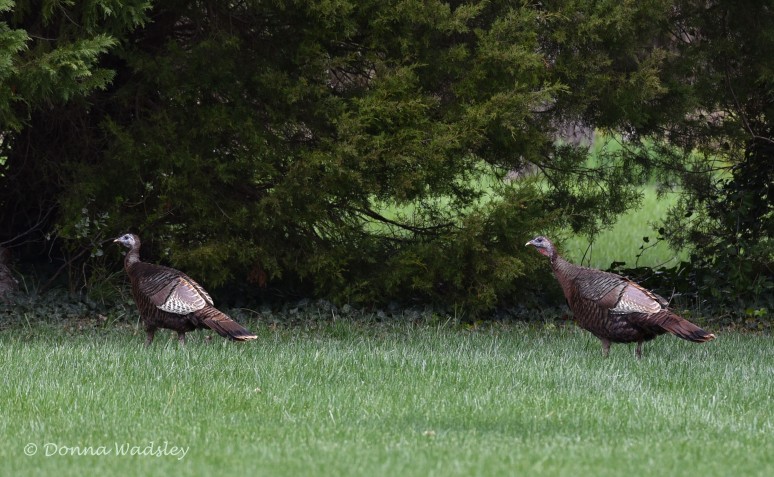
Wild Turkey (two of the hens/females)
.
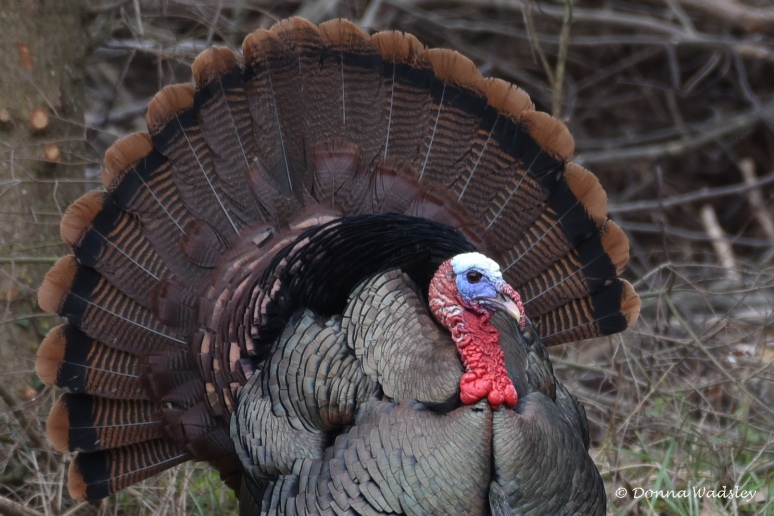
Handsome fella!
.
1-2-3 Birds and Berries – #13
The winter berries are all but gone, except for the lingering American holly berries.
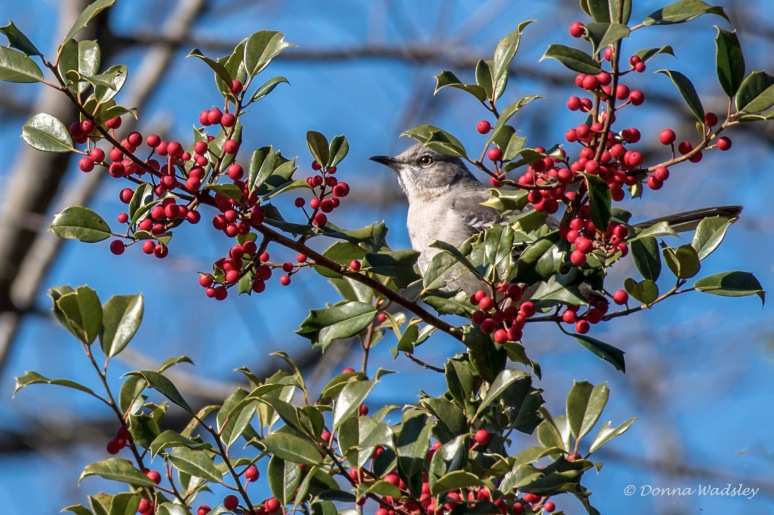
Northern Mockingbird
.
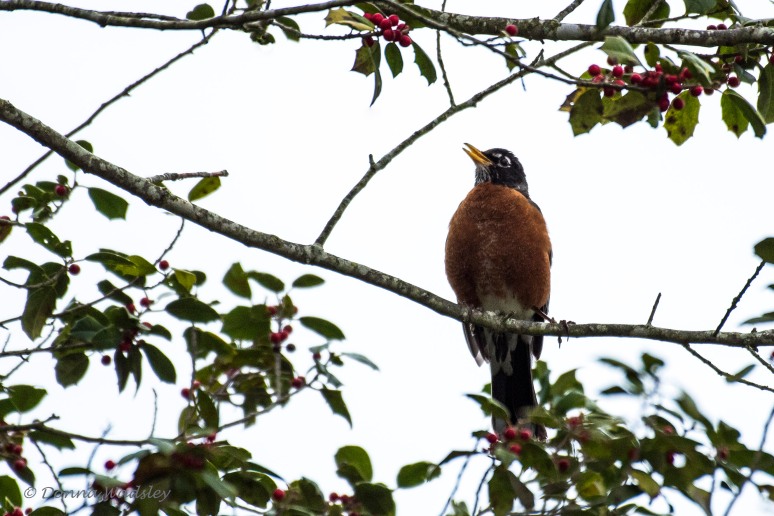
American Robin
.
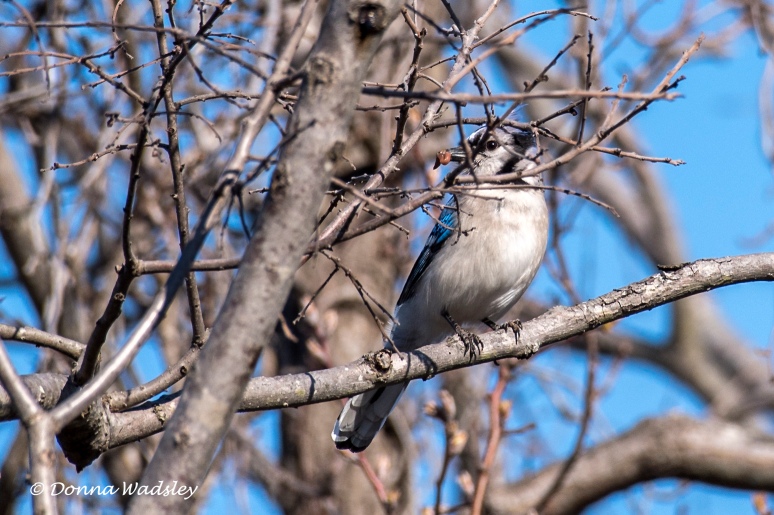
“Phooey to the berries, I’ll take a tasty spring worm over them any day!”
Blue Jay
.
.
Happy Easter
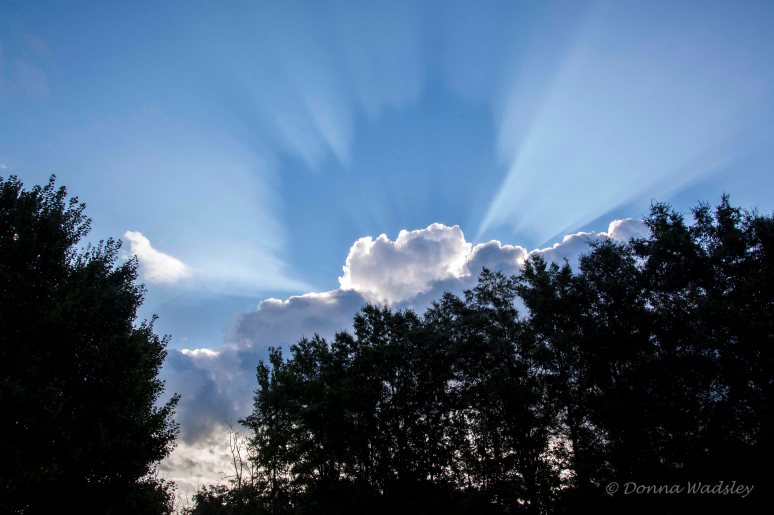
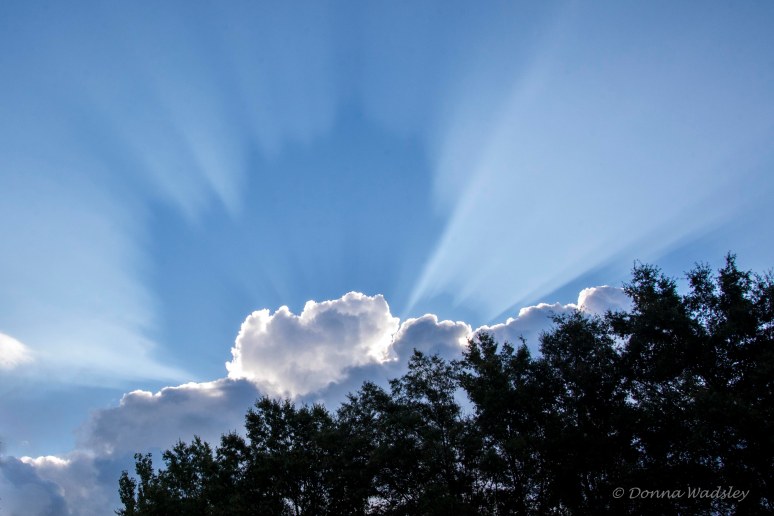
Wishing you a beautiful Easter Sunday!
.
Critter Time!
.
Who’s been coming out of their winter hiding?
.
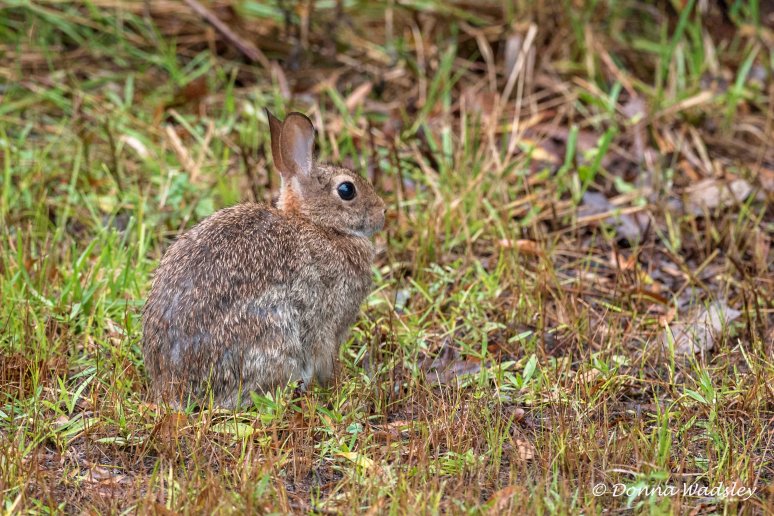
Eastern Cottontail
.

Red Fox on the run
.
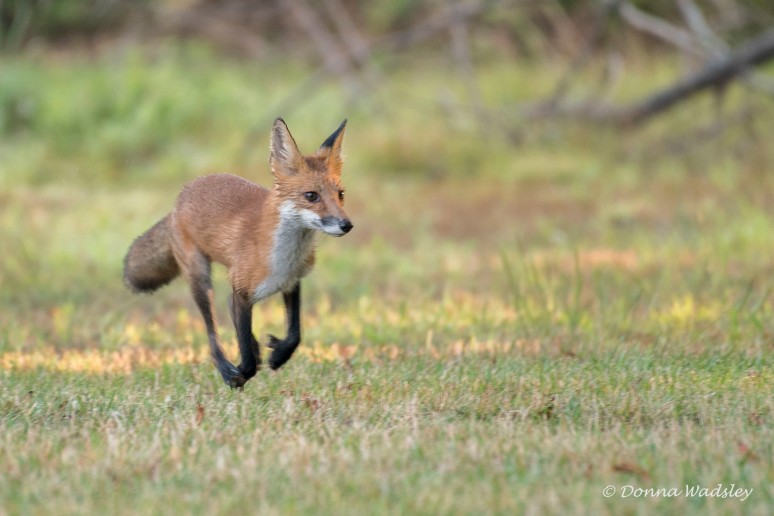
.
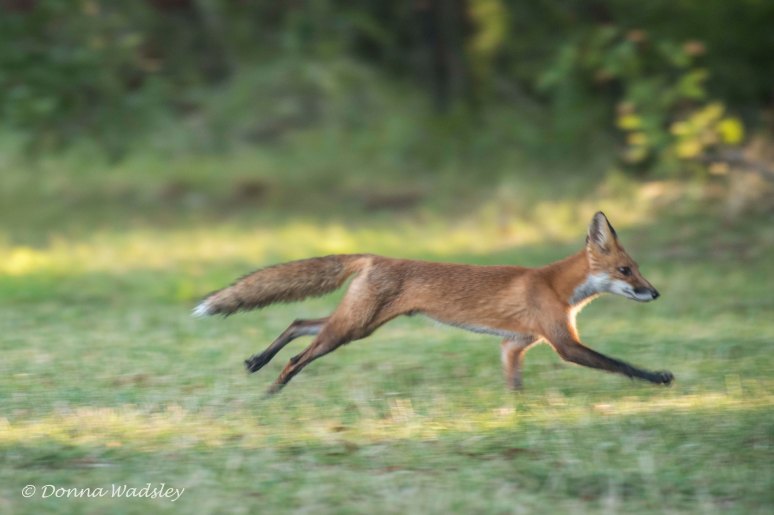
.

White-tailed deer buck and part of his herd
.

Rest of his herd that includes two piebalds
The piebald anomaly is a genetic variation (defect) that produces the piebald condition in white-tailed deer, and is not from parasites or diseases as some may think. In addition, the defect can also have issues with bone development.
Many piebald deer may still be able to live a long, healthy life. This genetic condition is rare with typically less than one percent of white-tailed deer being affected in Maryland. (courtesy Maryland DNR Wildlife website)
.
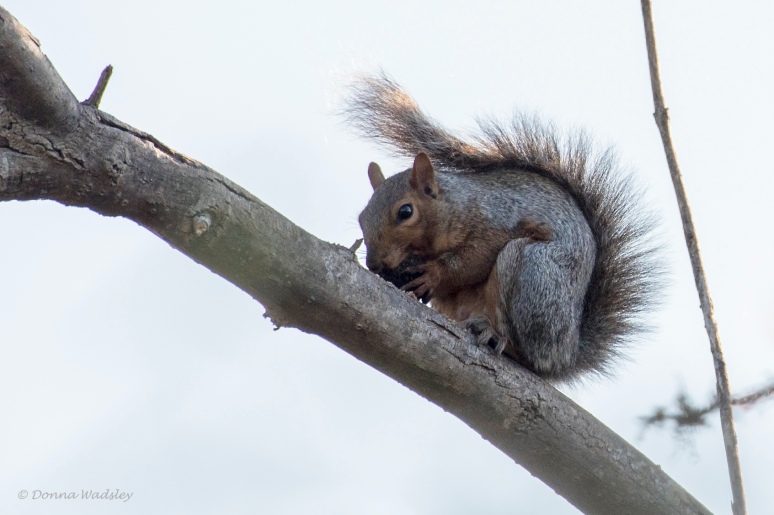
Gray Squirrel nibbling on a snack
.
Spring is waking everyone and everything up!
.
1-2-3 Medium Bird Jubilee – #20
I have some nice shots to share of the bigger and bolder medium-sized birds who gave me a chance at catching their winter beauty!
An added note, these are all year-round birds for me so none of these are leaving for migration, yay!
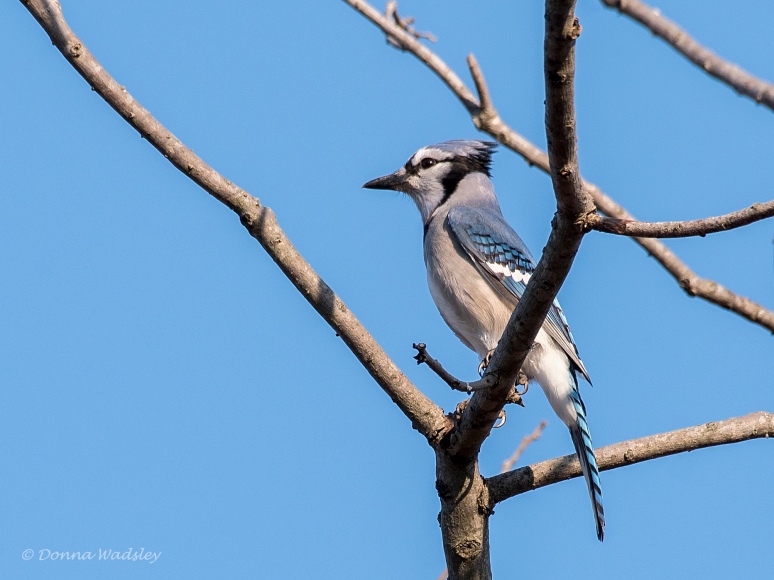
Blue Jay
Length 9.8-11.8 inches (25-30 cm)
Weight 2.5-3.5 oz (70-100 g)
Wingspan 13.4-16.9 inches (34-43 cm)
.
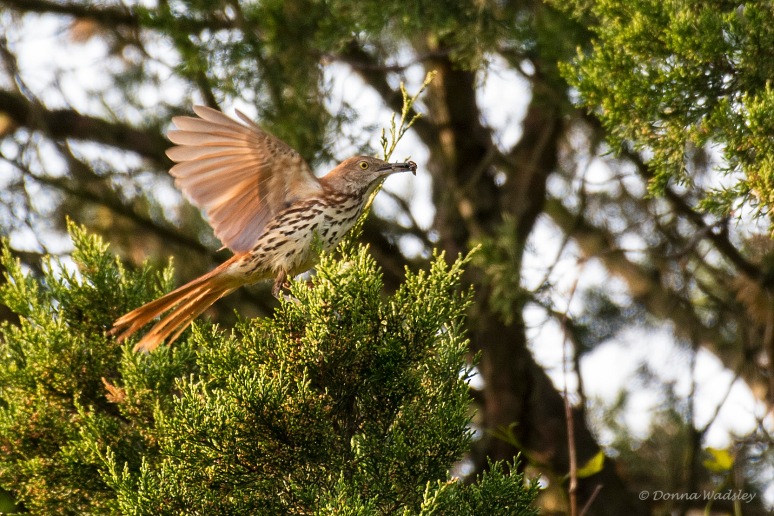
Brown Thrasher
Length 9.1-11.8 inches (23-30 cm)
Weight 2.1-3.1 oz (61-89 g)
Wingspan 11.4-12.6 inches (29-32 cm)
.
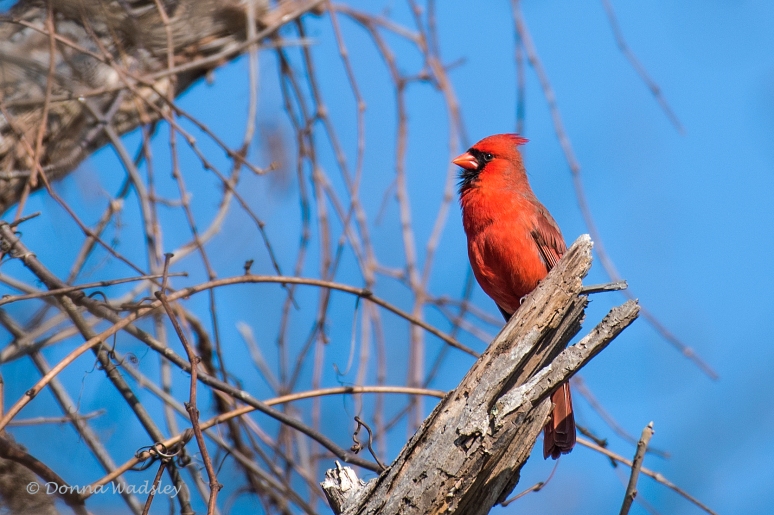
Northern Cardinal (male)
Length 8.3-9.1 inches (21-23 cm)
Weight 1.5-1.7 oz (42-48 g)
Wingspan 9.8-12.2 inches (25-31 cm)
.
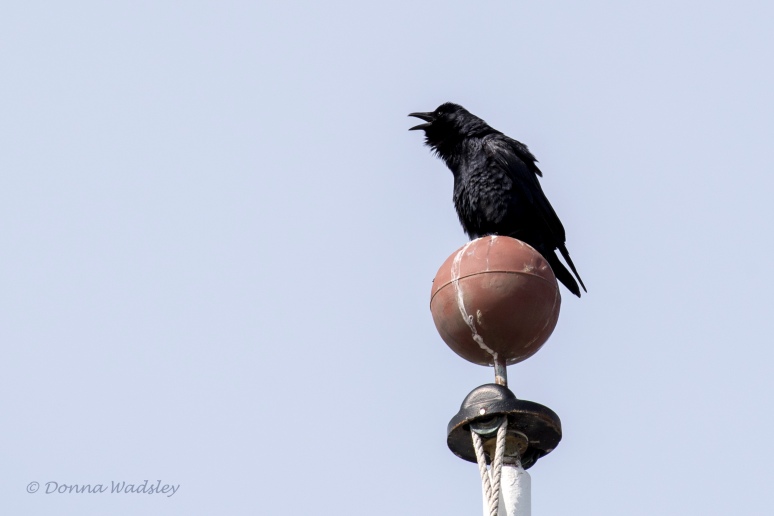
Fish Crow
Length 14.2-15.8 inches (36-40 cm)
Weight 6.9-11.6 oz (195-330 g)
Wingspan 33.1 inches (84 cm)
.
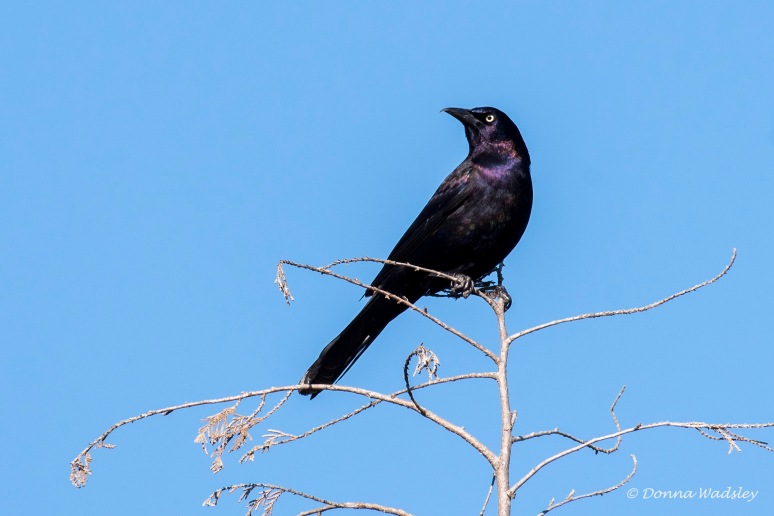
Common Grackle
Length 11.0-13.4 inches (28-34 cm)
Weight 2.6-5.0 oz (74-142 g)
Wingspan 14.2-18.1 inches (36-46 cm)
.
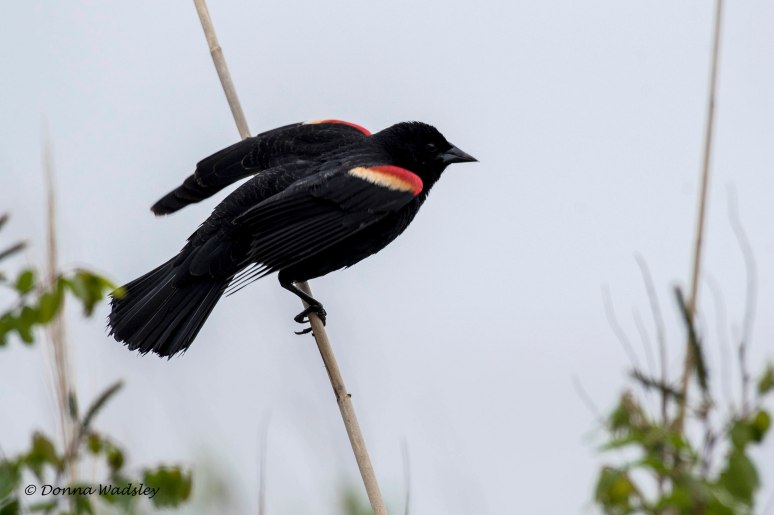
Red-winged Blackbird (male)
Length 6.7-9.1 inches (17-23 cm)
Weight 1.1-2.7 oz (32-77 g)
Wingspan 12.2-15.8 inches (31-40 cm)
.

Eastern Towhee (male)
Length 6.8-8.2 inches (17.3-20.8 cm)
Weight 1.1-1.8 oz (32-52 g)
Wingspan 7.9-11.0 inches (20-28 cm)
.
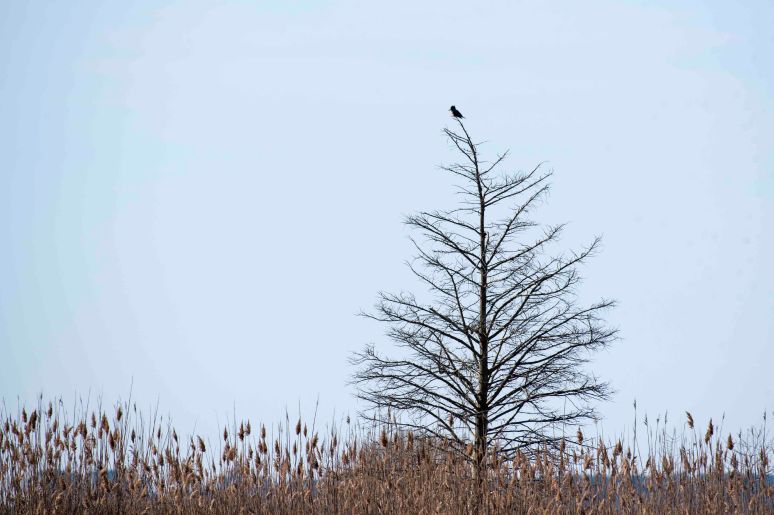
Belted Kingfisher
Length 11.0-13.8 inches (28-35 cm)
Weight 4.9-6.0 oz (140-170 g)
Wingspan 18.9-22.8 inches (48-58 cm)
.
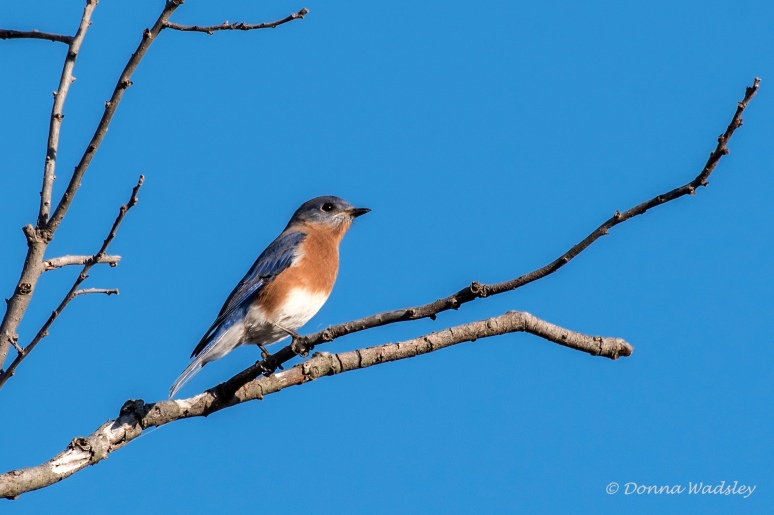
Eastern Bluebird (male)
Length 6.3-8.3 inches (16-21 cm)
Weight 1.0-1.1 oz (28-32 g)
Wingspan 9.8-12.6 inches (25-32 cm)
.

American Robin
Length 7.9-11.0 inches (20-28 cm)
Weight 2.7-3.0 oz (77-85 g)
Wingspan 12.2-15.8 inches (31-40 cm)
.
Last of the Winter Waterfowl
Our winter waterfowl are quickly disappearing as they start their northern migrations for home.
I’ve been out trying to get my last photos of them around the region as I bid them farewell!
.
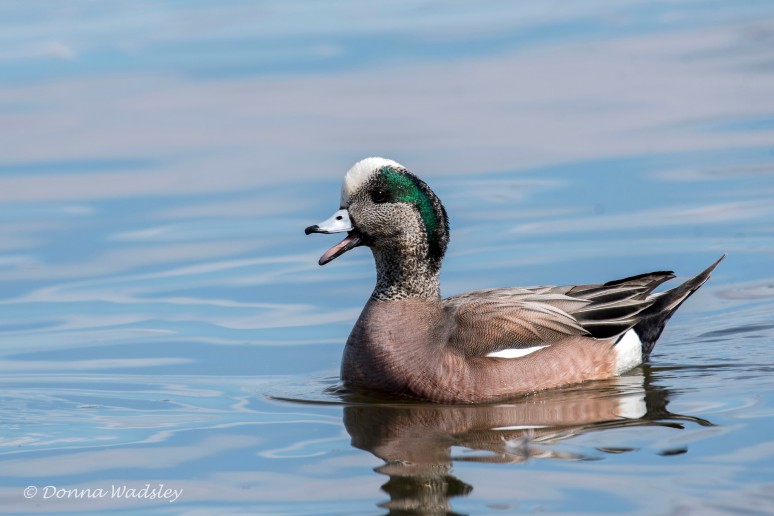
American Wigeon (male)
.
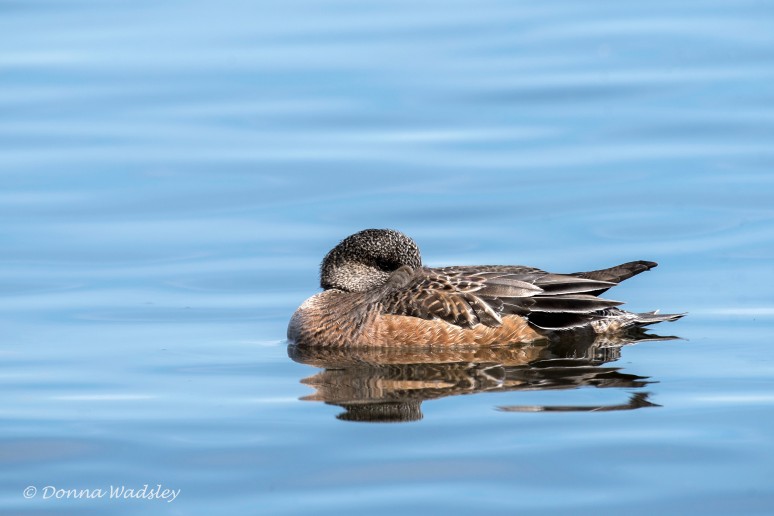
American Wigeon (female)
.
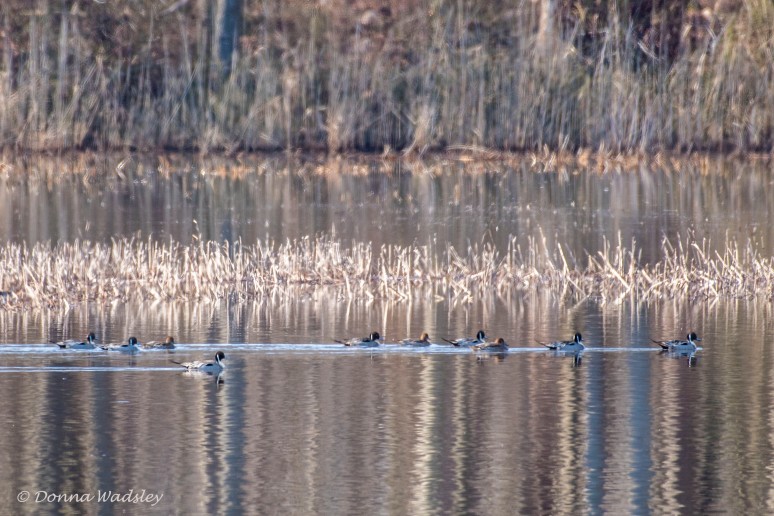
Northern Pintails
.
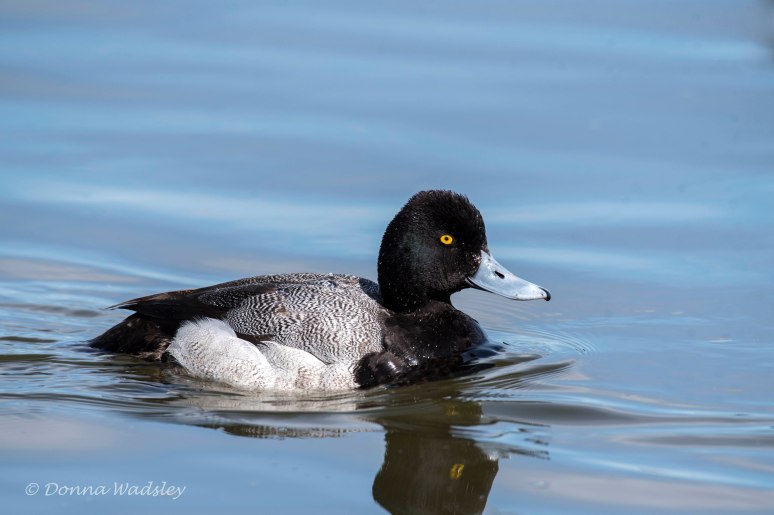
Lesser Scaup (male)
.
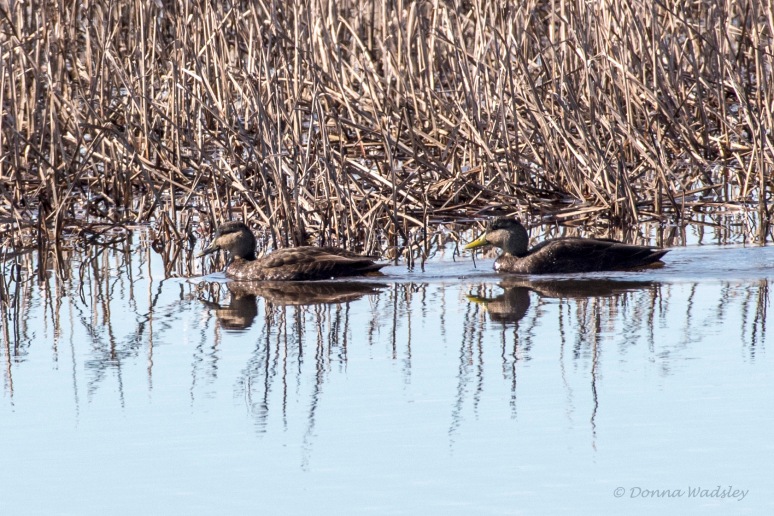
American Black Ducks
.
Mallard X American Black Duck hybrid
.
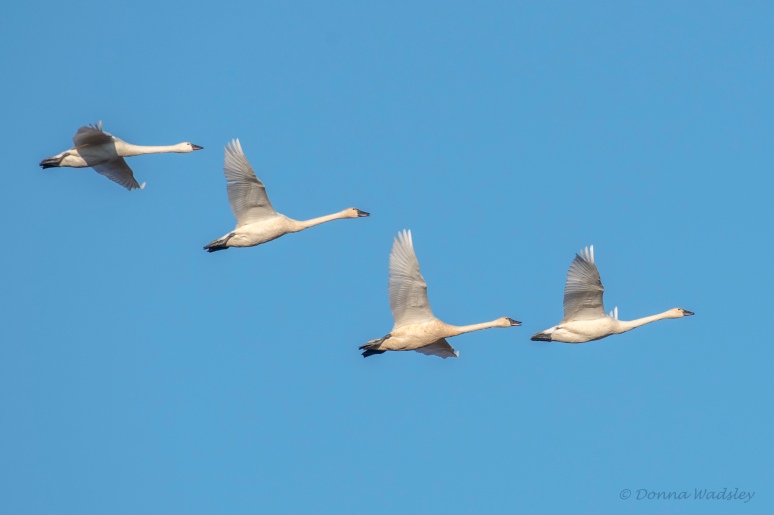
Tundra Swans
.

Long-tailed Duck (female)
.
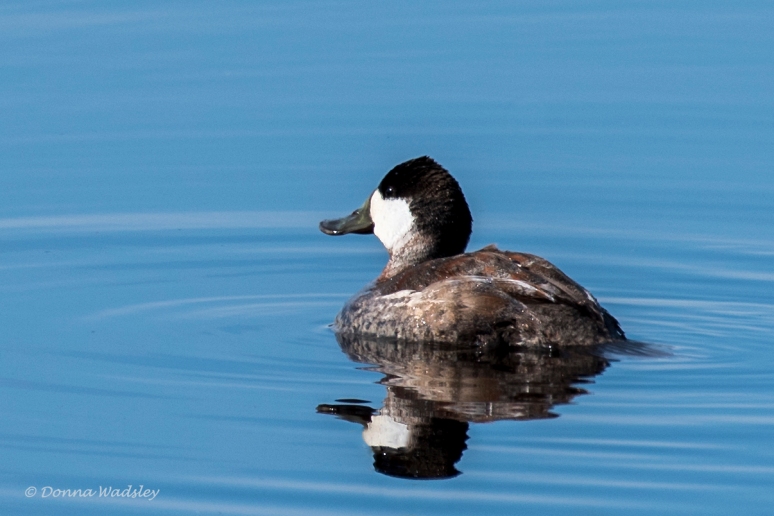
Ruddy Duck (male)
.

Common Mergansers
.
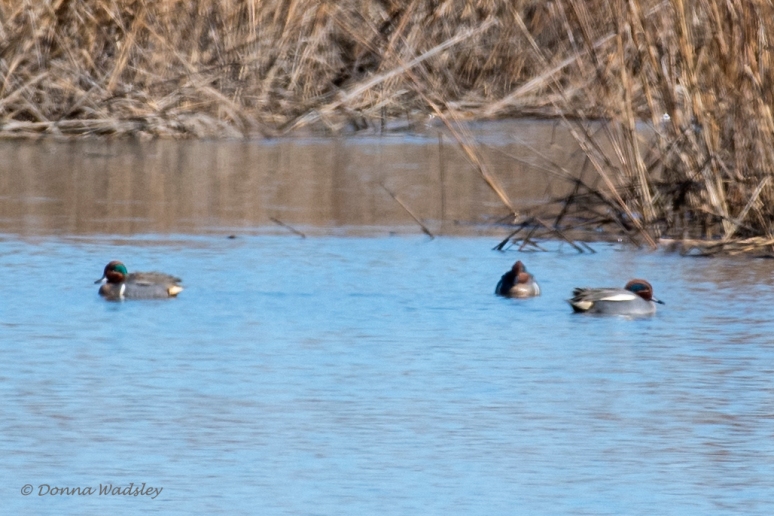
American Green-winged Teal with a rare Eurasian Green-winged Teal (far right)
.
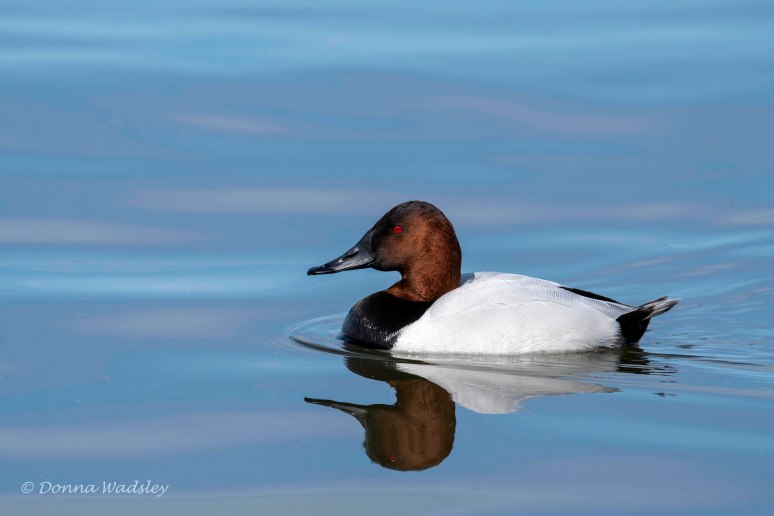
Canvasback (male)
.
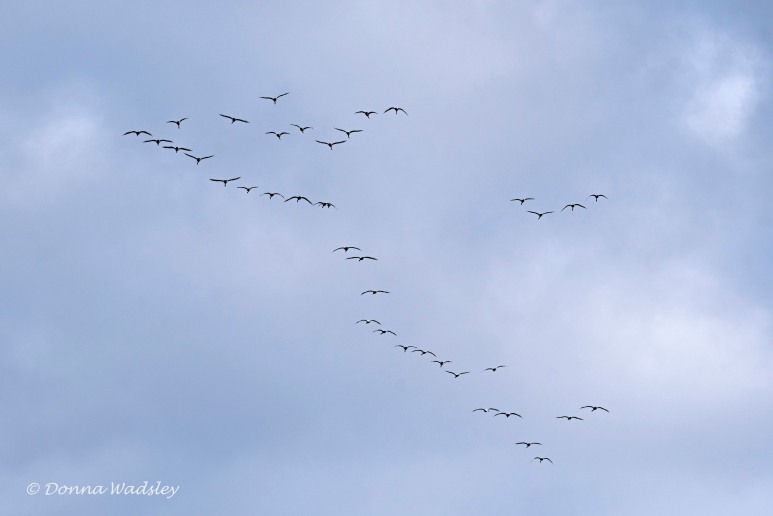
Tundra Swans heading for home
.
.

-
RECENT POSTS:
- Poplar Island Birding
- Wordless Wednesday
- Swan, Heron and Goslings
- 1-2-3 Cute As Can Be – #32
- Turkey Surprise
- 1-2-3 Birds and Berries – #13
- Happy Easter
- Critter Time!
- 1-2-3 Medium Bird Jubilee – #20
- Last of the Winter Waterfowl
- Cedar Waxwings
- It’s Osprey Time
- 1-2-3 Cute As Can Be – #31
- Five On The Wing – #37
- Sunrise, Sunset
-
© 2010-2024 Donna Wadsley, Photos by Donna, and Bay Photos by Donna. All rights reserved. The photographs and text herein are the property of Donna Wadsley and may not be reproduced, displayed, modified, or distributed without express, prior, written permission of the copyright holder. The unauthorized reproduction or distribution of a copyrighted work is illegal.
-
Join 2,248 other subscribers
- Follow Photos by Donna on WordPress.com
Blog Stats
- 236,106 visits. Thanks for stopping by!
-
Want to email me? bayphotosbydonna@gmail.com
Search my blog!
Categories
- "1-2-3 Birds & Berries" Series
- "1-2-3 Cute As Can Be" Series
- "1-2-3 Medium Bird Jubilee" Series
- "Comparing Bird Couples" Series
- "Five On The Wing" Series
- "Five On The Wire" Series
- 2010 Blog Diary
- 2011 Blog Diary
- 2012 Blog Diary
- 2013 Blog Diary
- 2014 Blog Diary
- 2015 Blog Diary
- 2016 Blog Diary
- 2017 Blog Diary
- 2018 Blog Diary
- 2019 Blog Diary
- 2020 Blog Diary
- 2021 Blog Diary
- 2022 Blog Diary
- 2023 Blog Diary
- 2024 Blog Diary
- Achievements
- Alligators
- American Avocets
- American Black Ducks
- American Coots
- American Kestrels
- American Oystercatchers
- American Robins
- American White Pelicans
- Anhingas
- Artist Rendition of My Photo
- Badlands NP
- Bats
- Bighorn Sheep
- Bison
- Black Hills
- Black Skimmers
- Black-necked Stilts
- Blackbirds
- Blackwater NWR
- Blue Crab
- Bluebirds
- Boat Races
- Boats
- Bobolinks
- Bombay Hook NWR
- Bridges
- Brown Creepers
- Bryce Canyon NP
- Buffleheads
- Buildings
- Buntings
- Butterflies
- Canvasbacks
- Canyon de Chelly
- Cape Charles VA
- Cardinals, Northern
- Cedar Waxwings
- Chesapeake Bay Env Ctr
- Chickadees
- Chickens
- Chipmunks
- Christmas
- Circles
- Clark's Nutcrackers
- Clouds
- Common Goldeneyes
- Common Nighthawks
- Corkscrew Swamp
- Cormorants
- Cowbirds
- Crabs
- Crazy Horse Mem'l
- Crested Caracaras
- Crows
- Cuckoos
- Deer
- Dickcissels
- Dolphins
- Donkeys/Burros
- Doves
- Dowitchers
- Dragonflies
- Ducks
- Dunlins
- Eagle vs Osprey Action
- Eagle, Golden
- Eagles, Bald
- Eastern Neck NWR
- Egrets
- El Morro Nat'l Monument
- Elk
- European Starlings
- Falcons
- Fall Foliage
- Finches
- Fish
- Flickers
- Flowers
- Flycatchers
- FMTM52weeks
- Fog
- Fox
- Frogs
- Fungi
- funny
- Gadwalls
- Gallinules
- Geese, Canada
- Geese, Ross's
- Geese, Snow
- Glacier NP
- Gnatcatchers
- Goats
- Godwits
- Goldfinchs
- Grackles
- Grand Canyon
- Gray Catbirds
- Grebes
- Grosbeaks
- Gulls
- hawk
- Hawk, Broad-Winged
- Hawk, Cooper's
- Hawk, Red-shouldered
- Hawk, Red-tailed
- Hawk, Sharp-Shinned
- Hearts Shaped By Birds
- Heron, Black-crowned Night
- Heron, Great Blue
- Heron, Green
- Heron, Little Blue
- Heron, Tricolored
- Heron, Yellow-crowned Night
- Hummingbirds
- Ibis
- Insects
- Jays
- Jelly Fish
- Juncos
- Kent Island
- Kent Narrows
- Killdeer
- Kingbirds
- Kingfishers
- Kinglets
- Kites
- Lake Greenwood, SC
- Lapwings
- Larks
- Lighthouses
- Lightning
- Limpkins
- Lizards
- Long-tailed Ducks
- Longspurs
- Loons
- Magnificent Frigatebirds
- Magpies
- Mallard Ducks
- Marshy Creek
- Meadowlarks
- Mergansers
- Merlins
- Moon
- Mottled Ducks
- Mt Rushmore
- Muskrats
- Mynas
- Northern Harriers
- Northern Mockingbird
- Northern Parulas
- Northern Pintail
- Northern Shoveler
- Nuthatches
- Orioles
- Osprey
- Osprey Bella&Beau
- Osprey Dives
- Osprey Rt 50/301
- Osprey vs Canada Geese
- Osprey Vs Eagle Action
- Osprey Vs Osprey Action
- Osprey/Eagle Interaction
- Osprey/Hawk Interaction
- Owls
- Oyster Cove Osprey Nest
- Oyster Cove Osprey Nest Visitors
- Pekin Ducks
- Pelicans
- People
- Pewees
- Phalaropes
- Phoebes
- Pickering Creek Audubon
- Pigeons
- Planes
- Plants/Trees
- Plover Semipalmated
- Plovers
- Poplar Island
- Prairie Dogs
- Prime Hook NWR
- Purple Martin
- Rabbits
- Rails
- Raven
- Rays
- Razorbills
- Redheads
- Redstarts
- Reflections
- Ring-necked Ducks
- Roadrunners
- Rocky Mountain Goats
- Roseate Spoonbills
- Rough-legged
- Route 66
- Ruddy Duck
- Ruddy Turnstones
- Sanderlings
- Sandhill Cranes
- Sandpipers
- Sapsuckers
- Scaup
- Scoters
- Shrikes
- smoke
- Snakes
- Solar Eclipse
- Sparrows
- Spiders
- Squirrels
- Stars
- Storms
- Sunrises
- Sunsets
- Swallows
- Swans
- Swifts
- Tanagers
- Teal
- Terns
- Thrashers
- Thrushes
- Towhees
- Trains
- Trees
- Tufted Titmouse
- Turkeys
- Turtles
- Vireos
- Vultures
- Warblers
- water
- Waterfalls
- Whimbrel
- Whistling Ducks
- Wigeons
- Willets
- Wilson's Snipe
- wood duck
- Wood Storks
- Woodpeckers
- Wrens
- Yellow-breasted Chat
- Yellowlegs
Pages




